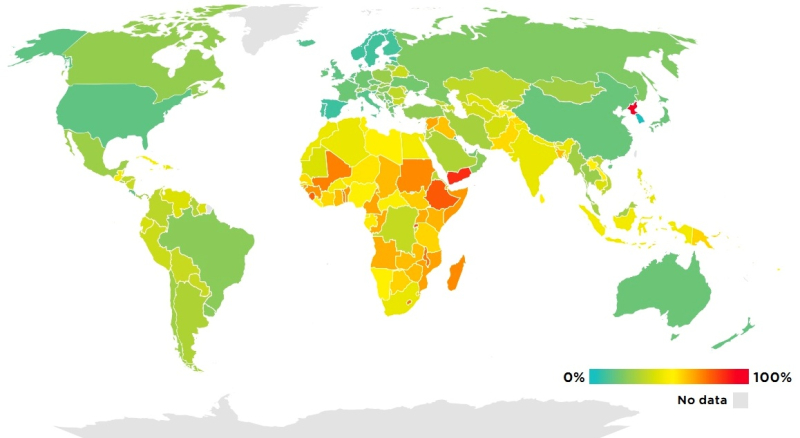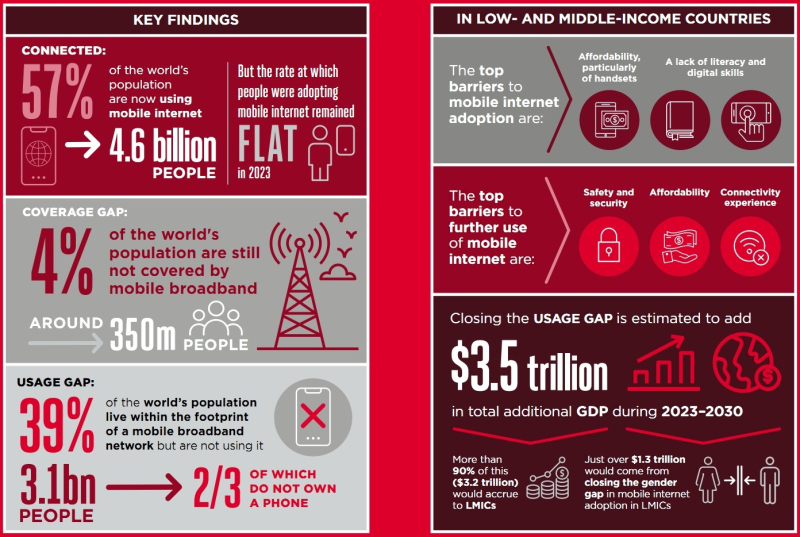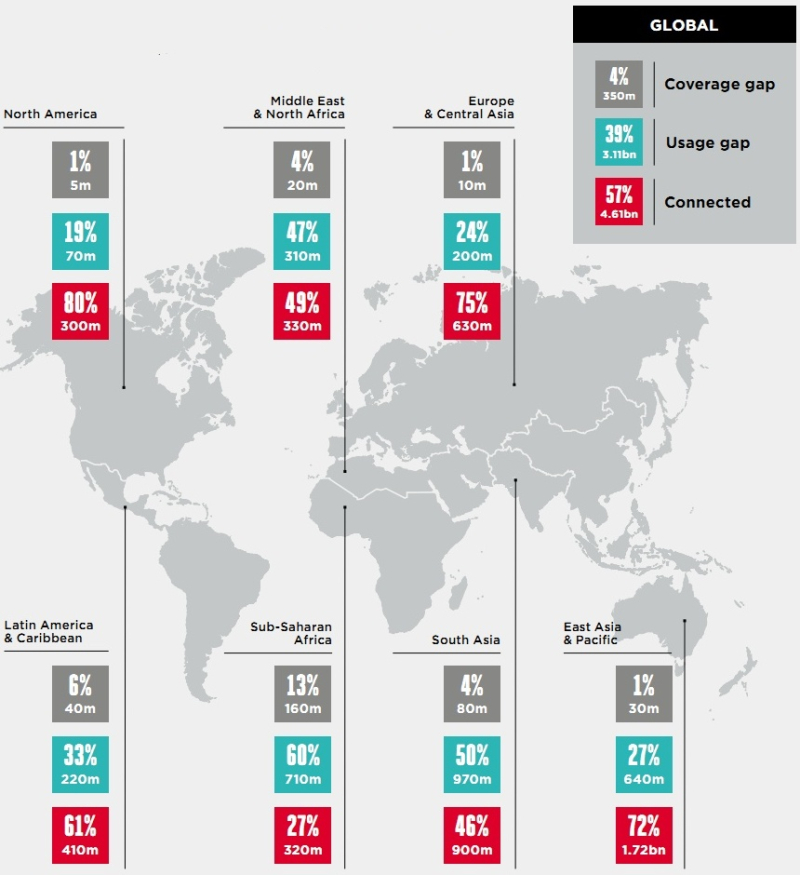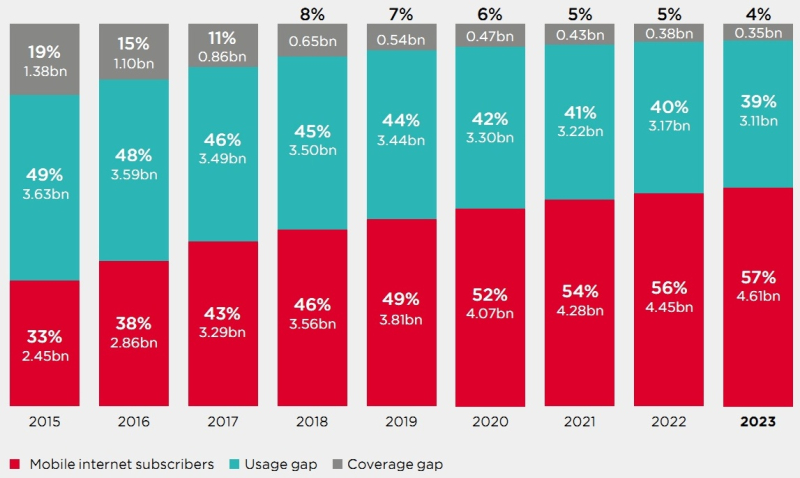According to a 93-page report by the GSM Association (GSMA), 57 percent of the world’s population, or about 4.6 billion people, had access to mobile internet by the end of 2023, but the rate of growth is slowing. The total number of people without access to mobile broadband is 3.45 billion, most of them in low- and middle-income countries. Moreover, 90 percent of them are within the network coverage area.

Percentage of areas not covered by mobile internet / Image source: GSMA
The report said that while more people are accessing the internet through mobile devices, significant digital divides remain. It is argued that the vast majority of those excluded from the digital world are rural residents, women, the poor and the less educated.
GSMA believes renewed efforts are needed to bridge this gap, as those without access risk being left behind in a world where the internet is used to provide critical services such as healthcare, education, e-commerce and finance.
The number of people connected to the mobile internet grew by 160 million over the year, indicating slower growth compared to 2015-2021, when more than 200 million people were connected to mobile broadband annually worldwide. 95 percent of those without mobile internet access live in low- and middle-income countries, and most of the growth in 2023 came from these countries.

Key indicators of global mobile broadband coverage
Only about 4 percent of the world’s population lives in areas without mobile broadband, suggesting that the problem is not a lack of coverage. According to the GSMA, approximately 350 million people living in remote and sparsely populated areas are not covered by mobile broadband.
Sub-Saharan Africa is the region with the lowest connectivity levels. About 13 percent of the population, or 160 million people, lack network coverage, but 60 percent (710 million) do not use mobile internet despite living in areas where coverage is available.
In regions such as North America and Europe, only 1 percent of the population is not covered by any network, while those who simply do not use mobile internet make up 19 and 24 percent of the population in these regions, respectively.

Broadband coverage and gaps at the end of 2023
The GSMA notes that almost all of the increase in mobile broadband coverage in low- and middle-income countries has been achieved through upgrades to 2G cell sites. However, more than half of the people not covered live in areas without existing mobile infrastructure, meaning connecting them will be expensive.

Changes in mobile broadband coverage 2015–2023
According to the International Telecommunication Union (ITU) and the International Monetary Fund (IMF), about $430 billion of investment will be required to create the infrastructure to provide universal access to mobile broadband by 2030. Closing the gaps will therefore require a combination of alternative technologies, comprehensive financing models and policy reform to stimulate investment.
GSMA expects 5G to become the fastest growing global mobile broadband technology by the end of the decade. But it is unlikely to become dominant in all countries, since it requires an extremely high level of financing, which also depends on the overall growth of household incomes. GSMA therefore calls on policymakers and the international community to make efforts to expand the availability of 4G technology that can deliver meaningful connectivity targets.
GSMA calls on governments, mobile operators and international organizations to work together to remove all barriers to mobile internet adoption and use, including phone and data affordability and expanding access to mobile broadband networks.